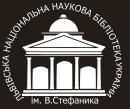DOI:https://doi.org/10.37222/2524-0315-2021-13(29)-21
Iryna Sikorska, Candidate of Art Studies, Senior Scientist, Department of Musicology and Ethnomusicology, M. Rylsky Institute of Art Studies, Folklore and Ethnology, National Academy of Sciences of Ukraine
Volodymyr Baltarovych’s Musical and theatrical heritage in the context of the formation of the Ukrainian operetta of the 1930s (from the funds of Vasyl Stefanyk National Scientific Library of Ukraine in Lviv)
Abstract:
Introduction. In the early 1930s, the task of creating a new Ukrainian operetta arose on Ukrainian soil, however, the ways and conditions of its implementation in Eastern and Western Ukraine differed significantly (state sys¬tem, ideology, professional and production opportunities, etc. played its role). In “UnderSoviet” Ukraine, composers were in a better financial position: there were stationary specialized theaters with professional performers, state support. However, they had to glorify the “happy Soviet life” (in the conditions of mass repressions and the Holodomor) — mainly due to mass song genres.
In 1930s, the musical-theatrical creativity of Lviv composer, singer, and public figure V. Baltarovich: “Mefistiada” (1930–31), “Three Hearts in 2/4” (1930), “Frogging” (1932–34), “The Marriage in Two Apartments” (1933), “Chords” (1934) and “Sich’s adventure” (1939, author of the libretto G. Luzh¬nytsky), — had a great popularity, confirming the responses of the press of that time. However, V. Baltarovich’s emigration to Czechoslovakia after II World War led to the removal of his works from the repertoire and a ban on even mentioning his name. Therefore, the fourth volume of the academic “History of Ukrainian Music” (1992) was only about Soviet operetta. The first information about the operettas of Western Ukraine began to appear only with the beginning of Ukraine’s independence.
As one knows, in the funds of V. Stefanyk’s LNSBU manuscripts of the musical comedies “Marriage in Two Apartments” and “Frogging” have been preserved since 2011. So, objectives: to introduce the named works into scien¬tific circulation and to inscribe them in the context of Ukrainian operetta.
The musical and theatrical heritage of V. Baltarovich (Ston) has been analyzed. His talent, education and musical activity at the head of the Bohemia theater studio made it possible to create outstanding works. His music was “fashionable”, easy to remember, with many salon dances (tango, waltz, foxtrot, rumba, etc.). The composer made extensive use of ensembles (duets, trios, sextet), and sometimes quoted classical music (F. Chopin’s Funeral March, Toreador’s couplets from opera “Carmen” G. Bizet etc.) in a parody key.
Results and Discussion Conclusion. We proved that V. Baltarovich’s musical and theatrical works were predominantly comic in nature (sometimes with elements of satire). Built on models of the salon genres, they were designed to entertain the public (and successfully achieved that goal). With some textual editing of these musical comedies (first of all, “Marriage in Two Apartments” and “Frogging”), they deserve a musical and stage reconstruc-tion, that will enrich the national repertoire.
Keywords: V. Baltarovich’s musical and theatrical heritage, musical co¬medies, epoch musical dictionary, “Marriage in two Apartments”, “Frogging”, operetta of 1930, becoming.
References:
1. Baltarovych, V. (1939, September 15). Z lystiv do Redaktsii [From letters to the editors]. Dilo, p. 7. [in Ukr.].
2. “Zhaburinnia” : Afisha [“Frowning” : Poster]. Retrieved from https://photo-lviv.in.ua/nevidoma-istoriya-oksany-suhoverskoji/ [in Ukr.].
3. Zaleskyi, O. (1971). Baltarovych Volodymyr (Shton). Mala ukrainska entsyklopediia. Miunkhen : Dniprova khvylia, 125 p. [in Ukr.].
4. I. N. [Nimchuk Ivan ?]. (1933, February 9). Z teatru [From the theater]. Dilo, p. 6. [in Ukr.].
5. Karas, H. (2012). Muzychna kultura ukrainskoi diaspory u svitovomu chasoprostori XX stolittia : monohrafiia. [Musical culture of the Ukrainian diaspora in the world space of the twentieth century]. Ivano-Frankivsk : Typovit, 1164 p. [in Ukr.].
6. Luzhnyczkyi, H. (1984, 9, December). Avtobiohrafiia (Vazhlyvishi uryvky z lystuvannia holovnoho redaktora “Teremu” z H. Luzhnytskym). [Auto¬biography (Important excerpts from the correspondence of the editor-in-chief of “Terem” with G. Luzhnytsky)]. Terem (SShA), p. 5 [in Ukr.].
7. Maichyk, N. T. (2009). Vokalna tvorchist B. Vesolovskoho ta V. Baltaro¬vycha v protsesi stanovlennia «lehkykh» zhanriv vokalnoi muzyky [Vocal creativity of B. Vesolovsky and V. Baltarovych in the process of formation of “light” genres of vocal music]. Muzychni studii Volynskoho universytetu. Lutsk, 3, pp. 165–174. [in Ukr.].
8. Medvedyk, P. (1993). Diiachi ukrainskoi muzychnoi kultury. Materialy do biobibliohr. slovnyka. Baltarovych [Figures of Ukrainian musical culture: Materials for a biobibliographic dictionary]. Zapysky Naukovoho tova¬rystva im. Shevchenka, 226: Praci muzykoznavchoi komisii, pp. 375–376 [in Ukr.].
9. Medvedyk, P. K. (2003). Baltarovych Volodymyr. Entsyklopediia Suchas¬noi Ukrainy. Kyiv : Nauk. dumka, 2, pp. 173–174. [in Ukr.].
10. Melnyk, I. Spivachka lvivskoi bohemy [Singer of Lviv “Bohemia”]. Zbruč. Retrieved from https:// zbruc.eu/node/34080 [in Ukr.].
11. Mushynka, M., Kupchynskyi O. & Yasinovskyi, Yu. (ed.) (1996). Ma¬lovidomyi ukrainskyi kompozytor Volodymyr Ston-Baltarovych [Little-known Ukrainian composer Volodymyr Ston-Baltarovych]. Zapysky Nau¬kovoho tovarystva im. Shevchenka, 232 : Praci muzykoznavchoyi komisiyi, pp. 373–387. [in Ukr.].
12. [Novynky] [Chronicle], (1933, March 3). Dilo, p. 5 [in Ukr.].
13. Novynky. [Chronicle], (1933, February 1). Ukrainska operetka u Lvovi. Dilo, p. 4. [in Ukr.].
14. Noha, O. (2006). Khroniky mista teatriv vid «Shekspira»: teatralne zhyttia Lvova vprodovzh 1920–1944 rokiv [Chronicles of the city of theaters. Theat¬rical life in Lviv during 1920–1944]. Lviv : Ukrtekhnolohii, 268 p. [in Ukr.].
15. Sikorska, I. (1992). Operetta [Operetta]. Istoriia ukrainskoi muzyky. Kyiv : Nauk. dumka, 4, рр. 378–390. [in Ukr.].
16. Sikorska, I. (2016). Operetta [Operetta]. Ukrainska muzychna entsyklo¬pediia. Kyiv : IMFE, 4, рр. 463–469. [in Ukr.].
17. Simovych, R. (1937, May 16). Z kontsertovoi sali [From the concert hall]. Dilo, p. 9 [in Ukr.].
18. Ston-Baltarovych, V. (1969). Avtobiohrafichnyi spomyn [Autobiographi¬cal memory]. Visti (Minnesota), 1(28), pp. 14–17 [in Ukr.].
19. Ston-Baltarovych Volodymyr, composer, singer. Retrieved from https:// 100krokiv.info/2017/06/baltarovych-volodymyr-kompozytor-spivak/ [in Ukr.].
20. Filonenko, L. (1999). Yaroslav Barnych : nauk.-popul. narys pro zhyttia i tvorchist [Yaroslav Barnych: non-fiction essay on life and work]. Droho¬bych : Vidrodzhennia, 150 p. [in Ukr.].
21. Chipka Halaktion. [Kupchynskyi R.]. (1933, February 15). Vidhuky dnia. “Zhaburynnia”. [Reviews of the day. “Frogging”]. Dilo, p. 5. [in Ukr.].
22. Shevchuk, O. (2006). Baltarovych (Ston) Volodymyr Symeonovych. Uk¬rainska muzychna entsyklopediia. Kyiv : IMFE, 1, рр. 133–134. [in Ukr.].

